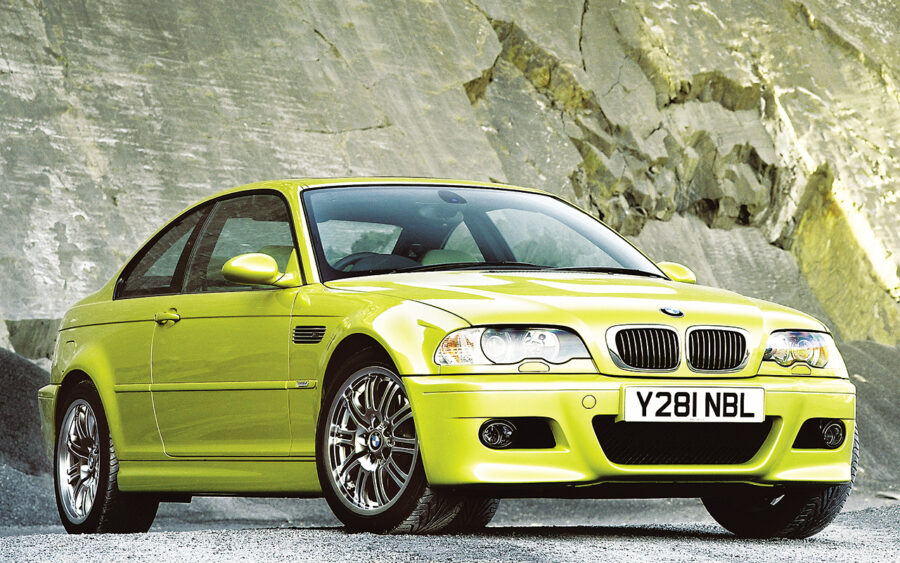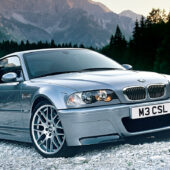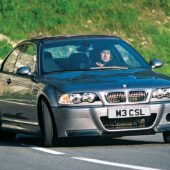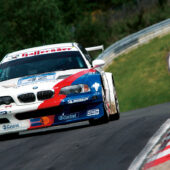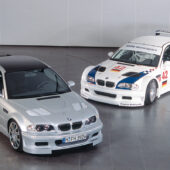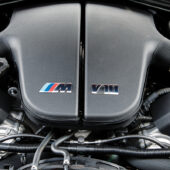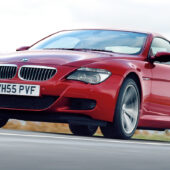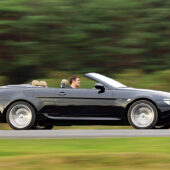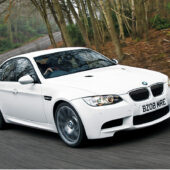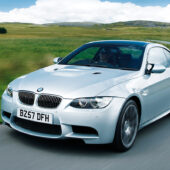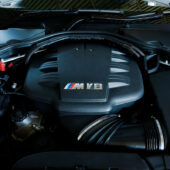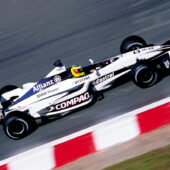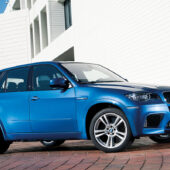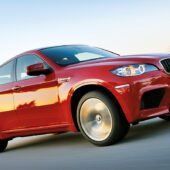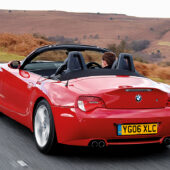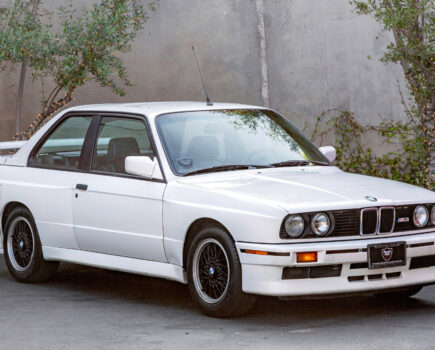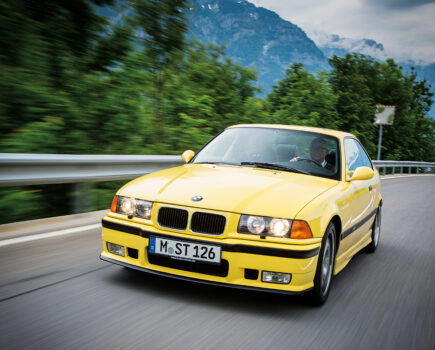The 2000s were exciting times for BMW M but by the end of the decade the writing was on the wall for its famous naturally aspirated engines
Words: Bob Harper
The last decade of the 20th century ended pretty well for BMW M, and BMW Motorsport, with the E39 M5 widely acknowledged as just about the best all-round super saloon the world had ever seen, while on track the V12 LMR had just won the prestigious 24-Hours of Le Mans. The road car line-up was looking a little thin though with the last of the E36 M3s trundling off the production line in 1999 while the Z3 M Roadster and Coupé were niche models selling in relatively low volumes. The M5 was doing well and in 2000 it was joined by one of the best loved M cars of all time.
Yes, we’re obviously talking about the E46 M3, an iconic machine that was just so ‘right’ straight out of the box. We knew it was coming thanks to the concept that was shown at the 1999 Frankfurt motor show but what lay beneath the sexy wide-arched chrome shadow paintwork was still a mystery. Previously BMW M had said that the S50 as used in the E36 M3 Evo was right at the very limit of its development so there was plenty of speculation that the E46 M3 would use a V8. However, developing a new unit from scratch would have been hugely expensive so M’s engineers were tasked with eking out every last drop from the S50.
The resulting S54 used in the E46 was an absolute masterpiece and even though it was only 45cc larger than the unit that proceeded it there was a useful power increase, now developing 343hp. An increased bore, double VANOS, reprofiled camshafts a higher compression ratio and an advanced Siemens/BMW engine management system were some of the highlights and perhaps even more impressive was the fact that this was a ‘world’ engine, meaning it would pass US emissions regulations, too.
The M3 was quick, responsive and wonderfully tactile with a superbly well-balanced chassis. This time it would only be offered in Coupé and Convertible guises but it was a huge success selling over 85,000 examples during its lifetime. It would spawn a couple of rather special machines too, but we’ll get onto those in a moment, as before they arrived and the E46 donated its engine to both the M Coupé and M Roadster.
As the E36 M3 had ceased production it made no sense for BMW to keep making the European and US-spec engines of the Z3 Ms so they briefly went out of production in mid-2000 but when they returned in 2001 they were better than ever. The S54 gave them a little more power but also donated its DSC traction control which made them a bit more manageable, especially in the wet. They were rare models too, accounting for just 14 percent of total Z3 M production and with just 73 right-hand drive Roadsters made the S54-engine version must be one of the rarest M cars outside of the limited edition models.
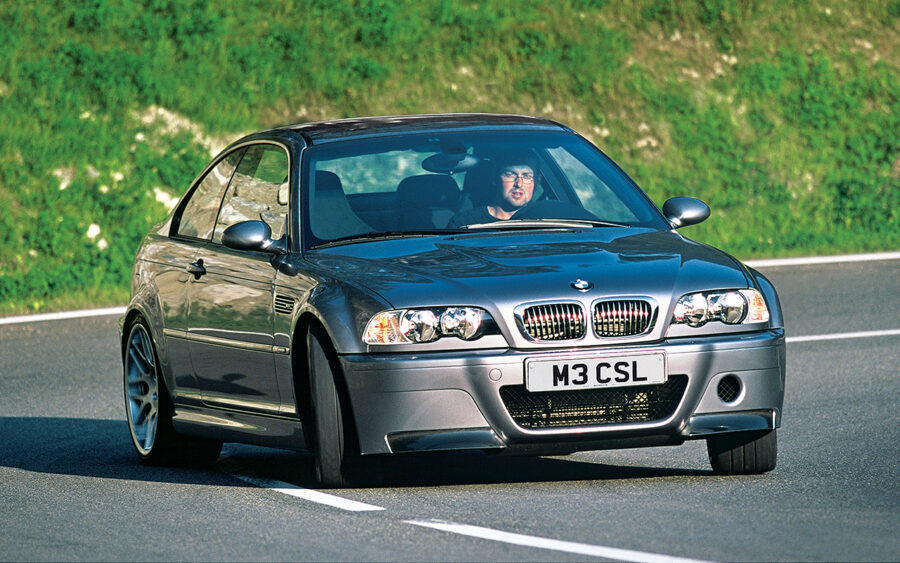
While the S54 Z3 Ms were cracking machines perhaps the finest home BMW found for the M Power ‘six was in the M3 CSL. Designed to be the hardcore, more driver- focussed version of the M3, it dropped weight thanks to a carbon roof, carbon components within the bumpers and a boot lid that was made of plastic, complete with a sexy duck tail integrated spoiler. Power was up to 360hp and the S54 sounded sensational thanks to a carbon airbox. There were tweaks to the suspension, steering and brakes and its stripped out interior stuck to the lightweight ethos. Best M car ever? Many people think so.
A ‘CSL-lite’ version was also developed, the M3 CS, which did without the CSL’s engine and lightweight components but it had the CSL’s brakes and steering along with CSL-style 19-inch alloys and while it wasn’t quite the stripped out focused racer it did offer a little bit more than the standard E46 M3.
While we’re talking about the M3 it’s worth remembering the iconic GTR model developed for track duties by BMW Motorsport. The S54-engined racing version couldn’t hold a candle to the dominant Porsche 911s in the American Le Mans Series (ALMS) so BMW loosely interpreted the rules and reckoned it could get away with producing a GTR with a bespoke 4.0-litre V8 so long as it produced a handful of road-going versions…
The GTR swept the board in the 2001 ALMS but following protests from Porsche it couldn’t go back and try to replicate this feat in 2002 so BMW turned its gaze towards European endurance racing. The M3s blew it in 2003 at the Nürburgring 24-Hour race thanks to packing their gearbox coolers with dry ice on the warm up lap which led to gearbox failure, but in 2004 and 2005 they returned and raced to a one-two in each event.
While the road car division was going great guns the Motorsport arm also had a big project on its hands – its return to Formula 1. As an engine supplier to Williams, BMW returned to the grid for the 2000 season and when Ralf Schumacher scored a podium position in BMW’s first race it looked like it would be on a path to winning ways in F1 once again. Throughout the Noughties there was plenty of promise but even though Paul Rosche’s V10 was reckoned to be the best engine on the grid the car lacked that final few percent that would have made it a serial winner. BMW stuck at it for virtually the entire decade but when it withdrew from F1 at the end of the 2009 season it had notched up just 11 wins in ten campaigns. It wasn’t all bad though as it did have a link back to the M division’s road cars.
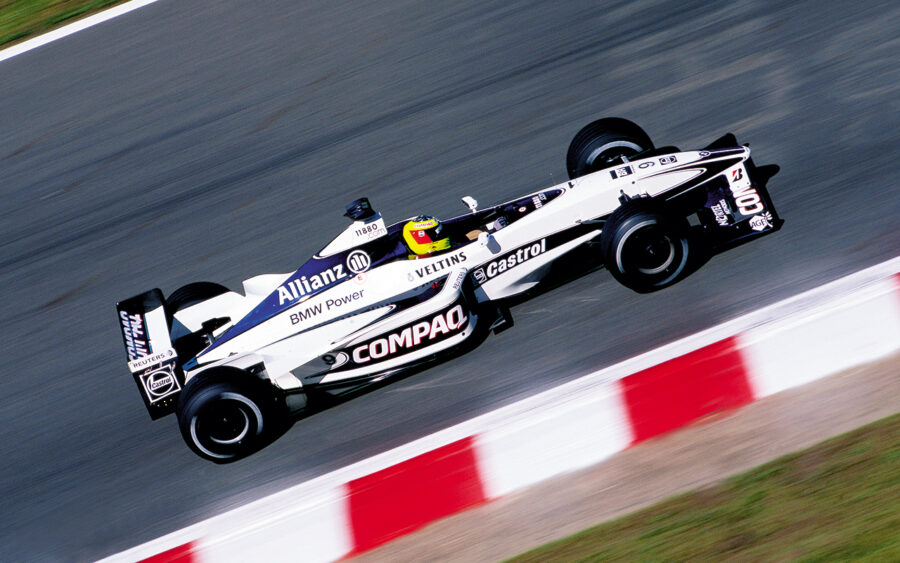
The E39 M5 had been a stonking sales success selling over 20,000 examples during its five-year reign as the world’s best super saloon so there was no doubt that a replacement would be in the offing when the E60-generation machine took over the mid-sized executive mantle. And thanks to BMW’s F1 campaign there was a very real need to create a tangible link between the costly pinnacle of motorsport and a road car. Thus, the E60 M5 was born, complete with its all-singing, all-dancing S85 V10 engine. Much was made of components being made at the same foundry that made the F1 engines and that its engine management system had been developed in-house by the F1 boffins but the bottom line was that it was an astonishing engine for a road car, let alone an executive saloon.
Performance was vivid to say the least with 0-62mph being ticked off in a scant 4.7- seconds while 0-125mph took 15-seconds dead. Best of all though was its 507hp output and a red line of 8500rpm – it sounded sensational too, and even though the SMG III transmission was a little clonky at times it was clear that BMW had once again produced the world’s ultimate super saloon. Luxury car, supercar and everyday car all rolled into one package that managed to be discreet but one that still elicited wild excitement. It featured a host of firsts for BMW but perhaps the most obvious was that this was the first-ever M car to have had a bespoke engine designed for it – all the ones that had come before could trace their origins to a production engine.
Unsurprisingly BMW needed another home for the V10 – enter the second generation of M6, this time in E63 (Coupé) and E64 (Convertible) guises. Back then the styling was still quite avant garde but there was no doubting the car’s GT credentials. A ballistic continent crusher that was equally at home clipping apices the M6 was even quicker than the M5 and like the M5 just about its only downside was its phenomenal thirst for unleaded which, thanks to small tanks, did slightly blunt the big GT role.
By the middle of the decade BMW had brought out three new models – M3, M5 and M6 – but there was still time for one final resting place for the venerable S54 straight-six. Despite first having seen the light of day as the S50 at the beginning of the 1990s there was a last hoorah for the naturally aspirated straight-six M power engine in the E85 and E86 M Roadster and Coupé. These were both short-lived machines with a production life that barely passed the two-year mark and while M could have easily developed them earlier their late arrival was perhaps more down to BMW’s assertion at the Z4 Roadster’s launch that there would be no M car or Z4 Coupé this time around.
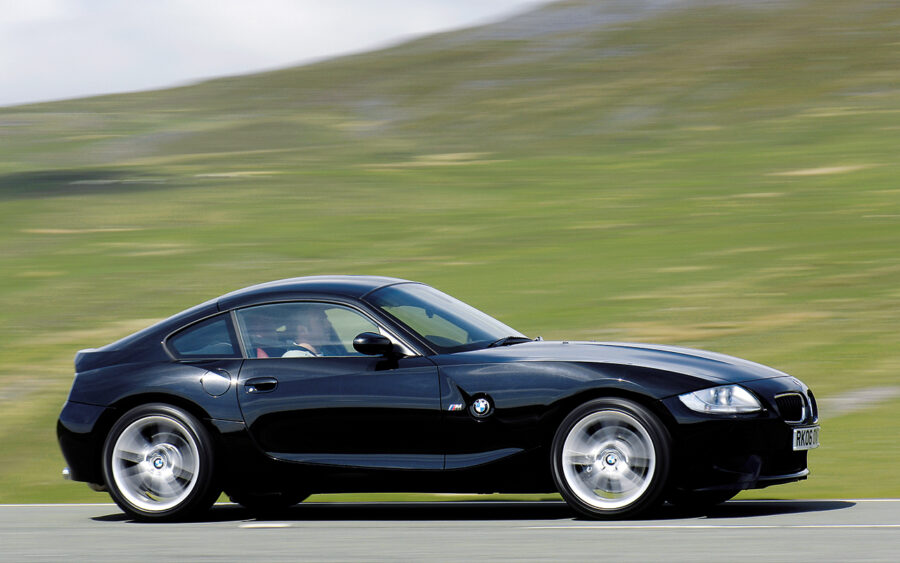
The Z4 Ms eventually made their debut in 2006 and both were pretty hardcore machines with involving chassis dynamics and plenty of get up and go thanks to their relatively low kerb weights they were sprightly performers, too. When they went off sale in the middle of 2008 it would be the swansong for the engine configuration that had served M so well ever since the debut of the M1 all those years ago. Will we ever see another naturally aspirated ‘six in an M car? Doubtful to say the least.
Onwards and upwards though and while the traditional M Power straight-six might have shuffled off to the great car park in the sky soon enough there was another great M engine to be excited about – the S65 V8 in the E9x generation of M3. Like its E46 predecessor the E92 M3 was first seen in concept form before making its motor show debut at Frankfurt in 2007. The S65 V8 was nothing short of a masterpiece and won the 3.0- to 4.0-litre class at the International Engine of the Year Awards for five years running.
Despite displacing 4.0-litres and packing eight-cylinders, the S65 was actually lighter than the E46 M3’s 3.2-litre S54 straight-six by 15kgs, and comprehensively outgunned it in every area. Maximum power of 420hp was developed at an astonishing 8300rpm, satisfying even the most rev-hungry M enthusiasts, just 100rpm shy of the redline, while the 295lb ft of torque peak arrived at 3900rpm but remained almost constant all the way to 6500rpm, offering impressive flexibility. With the standard six-speed manual gearbox, the 0-62mph sprint was dispatched in 4.8 seconds and with the optional seven-speed DCT transmission on board that fell to 4.6 seconds.
To start with the motoring press weren’t fully convinced – perhaps they were expecting a V8-engined CSL – but over time they fell for it hook, line and sinker and even as its production was being wound down it was still winning group tests. Available as a Coupé, Convertible and for the first time since the E36 M3, a Saloon, and it sold well, even if its debut did coincide with a recession which eventually affected sales figures. Special edition models were a feature of the E92 M3’s tenure and by the time it bowed out of production a little over 65,000 examples had been sold, nigh-on 20,000 less than the iconic E46 M3. Had we known at the time that it would be the last naturally aspirated M car we might have bought more of them!

The last pair of M models to make their debuts in the Noughties were an altogether more controversial duo – the E70 X5 M and the E71 X6 M. Given M’s DNA of producing finely honed racing machinery and exquisite road cars it came as a bit of a surprise that the sports activity vehicle leviathans would come under M’s remit. But what was worse, the fact that M was fettling 2.3-tonne SUVs or the fact that they’d have four-wheel drive, automatic transmissions and, sacré bleu, turbochargers?
Here were the first ever turbocharged M road cars and while you could question whether they should have been allowed, you couldn’t really quibble at their figures: 555hp, 501lb ft and a 0-62mph time of 4.7 seconds was good going, even if their back road ability was blunted by their height and weight.
The success of machinery such as the Porsche Cayenne had convinced BMW that there was a burgeoning market for this type of vehicle and between them the XM twins accounted for nearly 20,000 additional sales, or to put it another way, over 5,000 more sales than the E63 and E64 M6s could muster. The performance M SUV was here to stay and so was the turbocharger, but at least the development of the X5 and X6 M’s engine would come in handy in the next decade.

